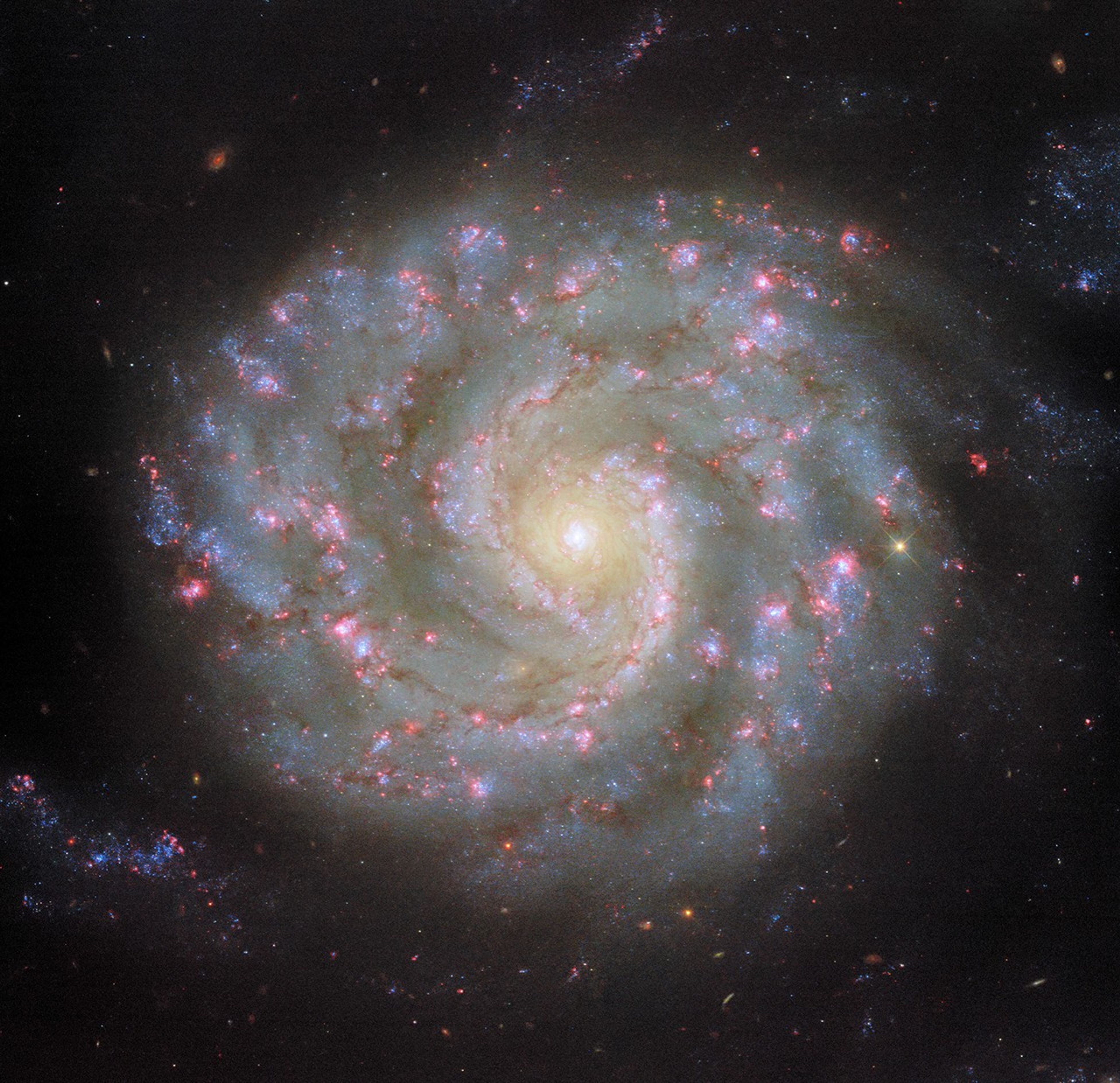2 min read
Hubble Comes Face-to-Face with Spiral’s Arms This Hubble Space Telescope image showcases the spiral galaxy NGC 3596. ESA/Hubble & NASA, D. ThilkerThe spiral galaxy NGC 3596 is on display in this NASA/ESA Hubble Space Telescope image that incorporates six different wavelengths of light. NGC 3596 is situated 90 million light-years from Earth in the constellation Leo, the Lion. British astronomer Sir William Herschel first documented the galaxy in 1784.
NGC 3596 appears almost perfectly face-on when viewed from Earth, showcasing the galaxy’s neatly wound spiral arms. These bright arms hold concentrations of stars, gas, and dust that mark the area where star formation is most active, illustrated by the brilliant pink star-forming regions and young blue stars tracing NGC 3596’s arms.
What causes these spiral arms to form? It’s a surprisingly difficult question to answer, partly because spiral galaxies are so diverse. Some have clear spiral arms, while others have patchy, feathery arms. Some have prominent bars across their centers, while others have compact, circular nuclei. Some have close neighbors, while others are isolated.
Early ideas of how spiral arms formed stumped astronomers with the ‘winding problem’. If a galaxy’s spiral arms are coherent structures, its arms would wind tighter and tighter as the galaxy spins, until the arms are no longer visible. Now, researchers believe that spiral arms represent a pattern of high-density and low-density areas rather than a physical structure. As stars, gas, and dust orbit within a galaxy’s disk, they pass in and out of the spiral arms. Much like cars moving through a traffic jam, these materials slow down and bunch up as they enter a spiral arm, before emerging and continuing their journey through the galaxy.
Facebook logo @NASAHubble @NASAHubble Instagram logo @NASAHubbleMedia Contact:
Claire Andreoli ([email protected])NASA’s Goddard Space Flight Center, Greenbelt, MD
Share
Details
Last Updated May 09, 2025 Editor Andrea Gianopoulos Location NASA Goddard Space Flight CenterRelated Terms
Hubble Space Telescope Astrophysics Astrophysics Division Galaxies Goddard Space Flight Center Spiral Galaxies Keep ExploringDiscover More Topics From Hubble
Hubble Space Telescope
Since its 1990 launch, the Hubble Space Telescope has changed our fundamental understanding of the universe.
Hubble Science Highlights
Hubble’s 35th Anniversary
Hubble’s Night Sky Challenge
Read More Details
Finally We wish PressBee provided you with enough information of ( Hubble Comes Face-to-Face with Spiral’s Arms )
Also on site :
- Trump cuts tariffs on U.K. cars, steel and aluminum but keeps 10% base duty while Britain trims its taxes on 2,500 U.S. products
- ‘Shadow Force’ Review: Two Spies Get Dragged From the Cold in Middling Action Opus
- T.J. Maxx Is Selling a Luxury, Line-Smoothing Eye Cream for Less Than $20

